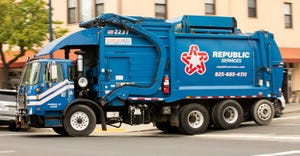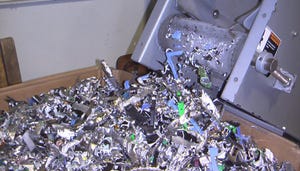trucks: Keeping Your Coolants
March 1, 1997
Bob Deierlein
New developments in cooling technology are helping reduce maintenance costs. Vince Ursini, Kysor/Cadillac, Cadillac, Mich., ex-plained that extended service interval (ESI) coolants are needed to minimize maintenance and eliminate issues with proper Supplemental Coolant Additive (SCA) levels. High levels can cause water pump seal leaks or solder corrosion and excessively low levels can cause liner pitting, he said.
Maintaining SCA levels requires topping off with either water or low silicate antifreeze that is not fully formulated. Also, depleting SCAs are difficult to test and add.
Traditional coolants generally re-quire supplemental coolant additives at 20,000 mile intervals; extended service interval coolants are said to be capable of delivering 150,000 to 200,000 miles.
Engine coolant categories include:
* conventional (low silicate anti-freeze with SCA package);
* conventional fully formulated; and
* Extended service interval (ESI)/Long Life.
The two current ESI coolants are the conventional SCA-timed release type which use an ESI filter and or-ganic acid technology, but others will soon follow, Ursini said.
KLLM Transport Services, Jackson, Miss., uses the more expensive ESI organic acid coolant because it provides a longer water pump and thermostat life, and eliminates the water filter, radiator flushing and coolant disposal. In addition, it eliminates plugged radiators, requires little additives, increases aluminum protection and reduces scale and deposit build up. KLLM reports an overall savings due to ESI coolant.
Fully-formulated antifreezes and coolants consist of ethylene glycol, propylene glycol, antifreeze (95 percent minimum glycol) and prediluted coolant (50 percent antifreeze with purified water). All variations contain a full precharge of SCA to protect cylinder liners.
The fill-for-life method consists of a fully-formulated antifreeze mixed with pure water, 50/50 mix, which is low in chlorides and hardness. The result is a pre-charged coolant with a -34 degrees F freeze point. An ESI coolant filter is used and the system runs 12 to 18 months or 100,000 to 150,000 miles before requiring a filter change.
Advantages include antifreeze availability and compatibility, ease of testing with readily available test kits and low purchase cost.
Why should you use extended-life carboxylate-based engine coolants?
* Easy maintenance, due to the low inhibitor depletion, improved stability with hard water, improved coolant compatibility and low toxicity.
* Maintenance of high-quality heat transfer and high temperature corrosion protection for alloys.
* Hardware endurance which provides for long water pump seal life.
Further characteristics include limited depletion, compatibility and performance.
However, some limitations are depleting inhibitors (extender additions at long intervals), foam and cavitation [original equipment manufacturers nitrite requirement for ad- ditional security]. It sounds complicated, but checking your coolant practices is important.
OAK BROOK, Ill. - WMX Tech-nologies Inc., Oak Brook, Ill., recently has announced that it will sell $1.5 billion worth of assets over the next 18-24 months, including the remaining engineering and consulting operations of its Rust International subsidiary.
Contrary to some speculation though, the Wheelabrator Technolo-gies waste-to-energy businesses and the Waste Management International subsidiaries will remain in the company's strategic plan for now.
The company also is eliminating up to 3,000 jobs by 1999, mainly from its Oak Brook corporate offices and nine regional group offices. Approximately 600 of the 1,200 employees to be let go this year already have been notified, the company said. Approximate-ly $300 million is expected to be saved through this restructuring.
However, even after accounting for the buyback of 50 million shares (10 percent), WMX stock has tumbled. The reason, analysts concur, is be-cause the company has lowered its earning targets to $1.75 per share in 1997 and $2.05 in 1998.
Other significant structural changes include the reassignment of CFO James Koenig to president of Waste Management Shared Services, and the resignation of CEO/President Phillip Rooney.
Major institutional shareholders re-portedly sought the executives' re-moval because of the company's stagnant performance and sagging stocks. John D. Sanford, vice president and chief financial officer for Wheelabra-tor, will take Koenig's place. And, WMX Chairman and former CEO Dean Buntrock will serve in Rooney's place until a replacement is found.
WMX also wants to return to its former name, Waste Management Inc., which it operated under until 1993. The proposal will be submitted to shareholders at its May 9 annual meeting.
You May Also Like


